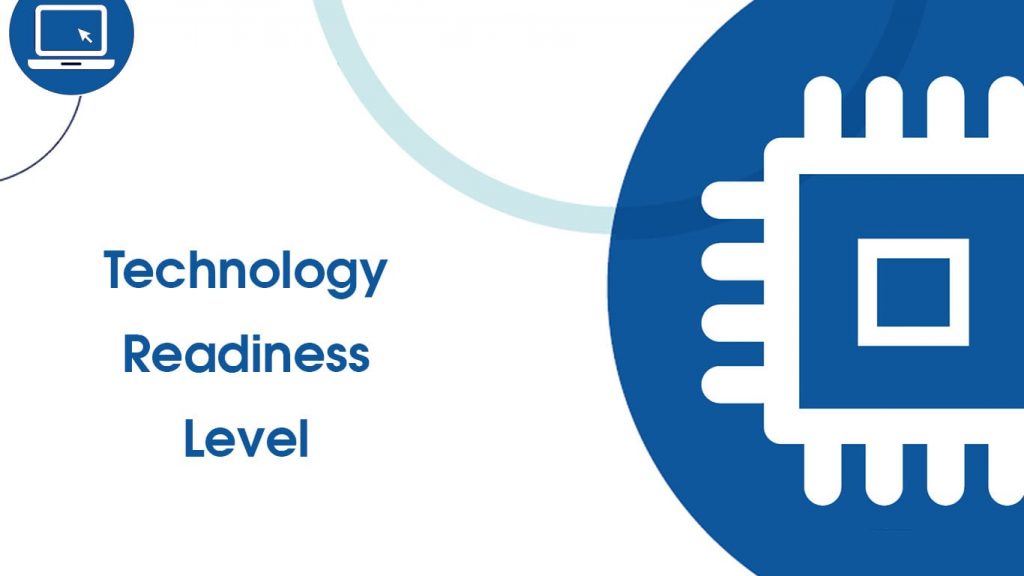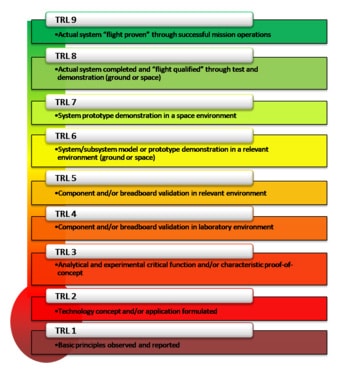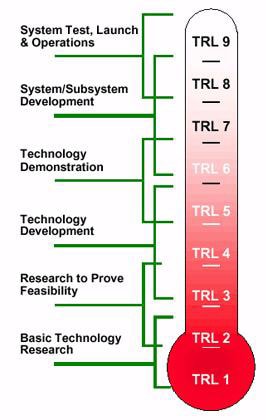
What is Technology Readiness Level? Technology Readiness Level is a method of estimating technology maturity. In short, it is called the TRL, which also resembles the same. TRLs are based on a scale from 1 to 9. Once a technology has level 9 on the TRL scale, it means that technology is the most mature one. Naturally, the maturation of the technology is considered to be low as the TRL scale value is small. Technology Readiness Level was created by NASA in the 70s to provide a uniform assessment measure for different types of technology.
Technology Readiness Levels by NASA

There are different definitions for Technology Readiness Levels. However, all of them aim for the same meaning but in different ways. One of the most reputed and widely used definitions of the TRL is from the National Aeronautics and Space Administration (NASA). We listed them below alongside the description of each level to let you know deeply about it. So, here goes the Technology Readiness Levels.
| Technology Readiness Level | Description of the TRL |
|---|---|
| TRL 1 – Basic principles observed and reported (lowest level of technology maturation) | The lowest level of technology maturation is where the things like scientific research begin to be translated into future research and development procedures. |
| TRL 2 – Technology concept and/or application formulated (application is still speculative) | The TRL 2 occurs when the basic physical principles are observed, and the practical applications of those characteristics can be applied to the findings in the initial procedure. At TRL 2, the application is still speculative because there is no experimental proof to support the findings. |
| TRL 3 – Analytical and experimental critical function and/or characteristic proof of concept | This is where the active research and development/design (R&D) is initiated. At TRL 3, the validation of the analytical studies and experiments in the TRL 2 happens. These studies and experiments should constitute “proof-of-concept” validation of the concepts or applications formulated at the TRL 2. |
| TRL 4 – Component and/or breadboard validation in a laboratory environment (proof-of-concept) | Once the “proof-of-concept” work is successful, multiple pieces of components and tested one another. |
| TRL 5 – Component and/or breadboard validation in a relevant environment | This is the continuation of the TRL 4 but the number of pieces tested one another will be increased significantly. A technology that is at TRL 5 is identified as a breadboard technology that should undergo extreme testing procedures when compared to TRL 4. Apart from that, the simulations should be run in environments that are as close to the realistic environment as possible. |
| TRL 6 – System/subsystem model or prototype demonstration in a relevant environment (any of the ground or space) | After TRL 5, TRL 6 is the next level. TRL 6 technology has a fully functional prototype or representational model. Here, if the only ‘relevant environment’ is the environment of space, then the prototype or the model must be demonstrated in space. |
| TRL 7 – System prototype demonstration in a space environment (a working prototype is needed) | The technology in TRL 7 requires that the working prototype or model be demonstrated in a space environment. In other words, it requires an actual system prototype/model demonstration in a space environment. |
| TRL 8 – Actual system completed and ‘flight qualified’ through test and demonstration (any of the ground or space) | TRL 8 is the end of the system development in most cases. Here is where the procedures like the integration of new technology into an existing system occur. A TRL 8 passed technology can be called a “flight qualified” technology. |
| TRL 9 – Actual system ‘flight proven’ through a successful mission (highest level of technology maturation) | TRL 9 is the last level where the “bug fixing” procedures take place. Here too, the integration of new technology into an existing system occurs. One thing to note is that the TRL 9 does not include planned product improvements of reusable or ongoing systems. In simple words, once a technology has been “flight proven” during a successful mission, it can be considered the TRL 9. |
Successfully achieving a TRL doesn’t mean that the technology has been moved to the next level. For example, once the technology has passed the TRL 2, it doesn’t mean that the technology is in TRL 3 now. We can only call it TRL 3 once it successfully achieved the TRL 3 requirements.
TRL Assessment Tools

Assessing the TRL was important in various situations. So, the United States Air Force developed a technology readiness level calculator. This assessment tool will provide a snapshot of technology maturity at a given point in time. It is basically an Excel file which is a set of questions that leads to a graphical representation of the TRLs achieved. Technology readiness assessment became way easier using this tool. There is no need for extra technology readiness level software in order to calculate the TRL in the development of modern technology gadgets.
Advantages of Technology Readiness Level
There are numerous advantages and disadvantages for the TRLs. Here are some of the advantages.
- Risk management made easier
- Provides a common understanding of technology status
- Can be used to make decisions concerning technology funding
- Can be used to make decisions concerning the transition of technologies over time
Disadvantages of Technology Readiness Level
Like any other thing, the TRLs also have a few disadvantages. Here are they.
- A mature product may possess a lesser or greater degree of readiness for use in a particular system context than one of lower maturity. This makes a little confusion.
- Numerous factors including the relevance of the product’s operational environment to the system at hand, well as the product-system architectural mismatch, etc. must be considered
- Readiness does not necessarily fit with the technology maturity
TRL Applications
Technology Readiness Level (TRL), despite being introduced by NASA, is not solely used in the aerospace industry. It is a model applied across multiple sectors to evaluate the maturity level of a specific technology. The TRL system is a robust framework that offers a consistent approach to assess the readiness of technology, making it a universal tool across diverse sectors. Let’s explore how the TRL is used in some key sectors.
Healthcare and Biomedical Research
In healthcare and biomedical research, TRL is instrumental in evaluating the maturity of medical technologies and therapeutics. This can range from the initial concept, pre-clinical research, and early human testing, to the final stages of multi-center clinical trials and market approval.
For instance, a new drug discovery could start at TRL 1, where the basic principles are observed and reported. It then gradually progresses to TRL 9, which indicates the successful usage of the drug in treating patients and its acceptance in the market.
Energy Sector
In the energy sector, TRL is used to determine the maturity of energy generation, transmission, and conservation technologies. For instance, in renewable energy research, the readiness of technologies like photovoltaic cells, wind turbines, or energy storage systems can be classified using the TRL framework. This helps energy companies and policymakers to decide where to invest resources and how to implement new technologies.
Automotive and Transportation Industry
In the automotive industry, TRL is employed to assess the readiness of new technologies, such as electric vehicles, autonomous driving systems, and advanced manufacturing techniques. This assessment is critical to the introduction of new products and systems in the market, ensuring that they are mature enough to meet safety, regulatory, and customer expectations.
In conclusion, the TRL framework’s wide applicability across industries demonstrates its effectiveness in assessing technology readiness. As technology continues to evolve rapidly, TRL will likely remain a valuable tool for decision-makers in technology development and deployment.
As you can see, the Technology Readiness Level (TRL) is extremely useful in technology development. Because, it is a crucial factor for increasing productivity by making it easier to assess modern technologies. Almost all important tech industries make use of TRLs in their operations.
If you don’t know, the Technology Readiness Levels were originally conceived at NASA in 1974. Then, formally defined in 1989. Since then, different industries or organizations such as Oil & Gas Industries, the European Commission, the European Space Agency (ESA), U.S. Department of Defense (DoD) defined the term in their own ways. They are suitable for specific tech streams in their own paths.
So, now you know what is TRL (Technology Readiness Level), its definition, application, and a lot more.